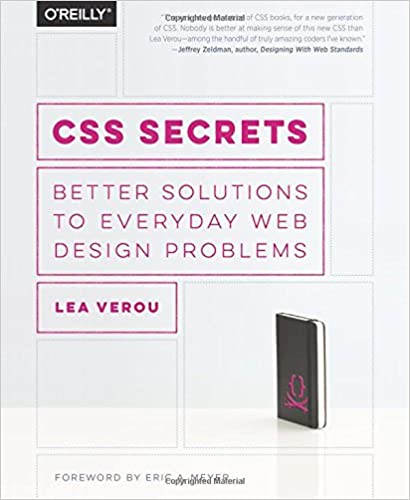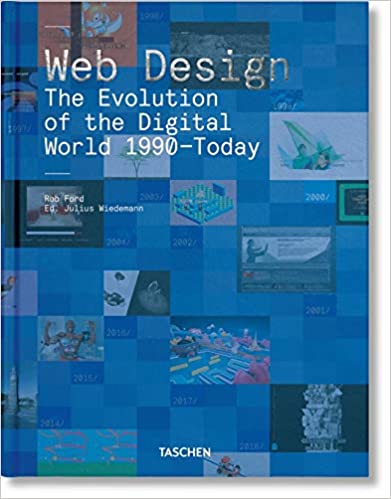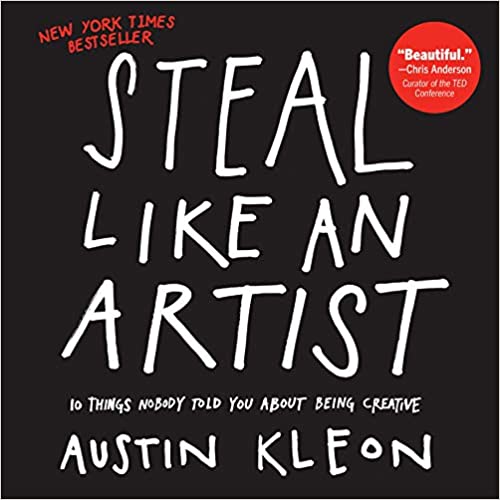Blog posts, magazines, and online courses are excellent resources for learning web design. In fact, they’re probably the first place most people go when they want to fill in the gaps of their knowledge or brush up on something. But books are a medium well suited for deep foundational study. Their authors have much more time and space than an article or even series of articles to introduce essential ideas and build upon them in a systematic fashion. And because of this there will always be a need for designers (both experienced veterans and brand new beginners) to read web design books.
11 Web Design Books to Borrow or Buy
These books cover various web design topics, from design theory and accessibility to CSS and JavaScript. There are all sorts of sub-skills involved in web design, so the book (or books) best for you will focus on the niche you’re most interested in. Let’s dive in!
Note: Pricing is for the lowest-cost version of the book at the time of this writing, rounded up to the nearest dollar.
Learning Web Design: A Beginner’s Guide to HTML, CSS, JavaScript, and Web Graphics by Jennifer Robbins

If you’re going to start with any single book, start here. Robbins’ guide has five main parts, 25 chapters and umpteen sub-chapters. You’ll jump in and eventually emerge a web design pro – or at least a very well-versed beginner. You don’t need any experience for this one, and quizzes throughout test that you did, in fact, learn key concepts. And even if you do know a thing or two about web design, this book is still worthwhile – it’ll probably teach you a few things you forgot or never seemed to learn.
Notable chapters include:
- It Takes a Village (Website Creation Roles)
- The Anatomy of a Web Page
- The Need for Speed (Site Performance)
- When Good Pages Go Bad
- Underlines and Other “Decorations”
Price: $12 to Rent | More Information
The Principles of Beautiful Web Design by Jason Beaird, Alex Walker and James George

This book doesn’t just tell you how to create a web page or add an element to it but also how to choose your design before you get to work. For example, to choose your color palette, you’ll learn about color theory; same goes for choosing fonts and sourcing images the legal way. And of course, you’ll also discover how to apply the strategies covered, with special thanks to the sample project so you can start practicing right away.
Notable chapters include:
- Defining Good Design
- Color Theory 101
- Building Texture: Vintage, Patterned, Worn, and Nostalgic Styles
- Choosing the Right Fonts
- Legitimate Image Sources
Price: $17 to Rent | More Information
UX Design 2020: The Ultimate Beginner’s Guide to User Experience by Theo Farrington

While there is a small portion of this book dedicated to working as a professional user experience (UX) designer, it’s much more geared toward teaching web designers about UX design. Yes, a website with a high-quality UX design is easier for the visitor to use. It goes beyond that, though – it can also improve the user’s life.
Think of this: Someone heads online to find information from their local hospital. With UX in mind, the site will be easy to navigate, with pertinent information above-the-fold. The user will know exactly how to find a doctor or the location of the closest hospital branch; they may even be able to request an appointment. Not only is the website easy to navigate, but getting around it quickly can mean helping someone out when they’re in the middle of a medical crisis.
Notable chapters include:
- What is UX For? (Interfaces, Products, Content, Services and Spaces)
- The 7 Golden Rules of UX Design
- Your Perspective vs. User Perspective
- Human Behavior and Motivations
- What Does a UX Designer Do?
Price: $10 | More Information
Laws of UX: Using Psychology to Design Better Products and Services by Jon Yablonski

This book helps web designers improve their UX by first explaining the different laws and principles of psychology and design. Overall, it answers many questions that start with, “Why do users react a certain way when…” And while understanding psychology doesn’t sound like a design skill, it is. Your goal is to appeal to the users, which means thinking like them and knowing how they’re going to behave before they do.
Notable chapters include:
- Jakob’s Law (designing a site that’s similar to other sites your audience is familiar with)
- Peak-End Rule (small changes have a big impact)
- Aesthetic-Usability Effect (how users perceive aesthetically-pleasing designs in terms of usability)
- Doherty Threshold (computers and users should interact with one another at a fast pace)
- Applying Psychological Principles in Design
Price: $27 | More Information
Web Design Playground: HTML + CSS the Interactive Way by Paul McFedries

While the heavy focus of this book is on HTML and CSS, as the name implies, it takes a broad look at various web design elements. And though you do need some tech savvy, or at least the interest in becoming tech-savvy, it’s aimed at beginners who need an introduction to the topic. The projects are actionable, not just informative, so once you’re finished with the book, you can have a home page, landing page, portfolio page and gallery. Plus, the book is accompanied by an actual, interactive Web Design Playground that you can use to test out your code.
Notable chapters include:
- Floating and Positioning Elements
- Creating a Landing Page
- Making Your Images and Topography Responsive
- Adding a Splash of Color to Your Web Designs
- Creating a Portfolio Page
Price: $34 | More Information
Basics of Web Design: HTML and CSS by Terry Felke-Morris

Basics of Web Design is technically a student textbook, and it also stands out because it discusses HTML and CSS strategies but also tackles soft skills, like choosing colors for your website and designing for your target audience.
Notable chapters include:
- Under the Hood of a Web Page
- Practice With Structural Elements
- Your Target Audience
- Website Organization
- Choose a Web Host
Truthfully, those chapter examples don’t even cover the half of it. For example, there’s a section of the book called Responsive Layout Basics, and it has almost 20 sub-topics nestled under it. Those sub-topics include CSS Flexible Box Layout, CSS Grid Layout, and Responsive Grid Layout with Media Queries. The point? You can get into the nuts and bolts of various HTML and CSS topics. Yes, this book is still considered an introduction to the field, but it’s a very thorough and thoughtful introduction.
Price: $63 to Rent | More Information
CSS in Depth by Keith J. Grant

There’s a lot crammed into this book. But even if you don’t want to be well-versed in every area of CSS, it’s useful if you want to dive deeper into a few sub-topics. For example, maybe you care more about typography than animations – skip the chapters you don’t care about and dig into the ones you do.
And if you do want to become the biggest CSS expert you know, you’ll love the best practices and clever examples Grant offers. Both your design intuition and your tech skills will be improved after this read. And bonus: It’ll help if you’re designing a mobile app, too.
Notable chapters include:
- Making Sense of Floats
- Responsive Design
- Pattern Libraries
- Backgrounds, Shadows, and Blend Modes
- Contrast, Color, and Space
Price: $42 | More Information
CSS Secrets: Better Solutions to Everyday Web Design Problems by Lea Verou

This is another CSS-focused book, covering many of the same topics as Grant’s. However, you may find that it goes deeper into specific aesthetics, which could make it a better fit for you if you have particular elements to work on. For example, the Topography section has sub-sections like Hyphenation, Zebra-Striped Text Lines and Circular Text.
Notable chapters include:
- Web Standards: Friend or Foe?
- Realistic Text Effects
- Picking the Right Cursor
- Taming Table Column Widths
- Frame-by-Frame Animations
Price: $9 to Rent | More Information
Inclusive Design for a Digital World: Designing with Accessibility in Mind by Regine M. Gilbert

Narrowing down your target audience is a worthwhile pursuit, but you don’t want to exclude a segment of them (even accidentally) because you have an inaccessible website. In Inclusive Design for a Digital World, you’ll learn how to make your website (and other tech products, like mobile apps) accessible to those who need solutions. The book’s description puts it best: “Think about every potential user who could be using your product. Could they be visually impaired? Have limited motor skills? Be deaf or hard of hearing? This book addresses a plethora of web accessibility issues that people with disabilities face.”
Notable chapters include:
- Medical/Social Model of Disability
- What is Assistive Technology?
- Creating a Culture of Inclusivity/Accessibility
- Using Virtual Reality Technologies
- Artificial Intelligence and Accessibility
Price: $9 to Rent | More Information
Web Design: The Evolution of the Digital World 1990 – Today by Rob Ford

For web design lovers or tech-heads, this book is a walk down memory lane – even if you weren’t alive to experience the dawning of the internet. This visual history book walks you through the first of practically everything internet-related, from drag-and-drop navigation and video integration to viral and mobile websites. Plus, there are insights from the creators of those first-ever sites and elements. Tap into how pioneers think, plus how tech started out so it could develop into the modern websites we know today.
Notable chapters include:
- 2000: The Web Comes to Life
- 2004: The Year of the Original Viral Site
- 2007: The Year Full-Screen Video Arrives – Along with the iPhone
- 2014: The Year Mobile Browsers Became as Powerful as Desktops
- 2017: The Year the Web Evolved Out of the Web
Price: $31 | More Information
Honorable Mention: Steal Like an Artist by Austin Kleon

This is definitely the oldest book on this list, having been published in 2012, but we couldn’t possibly leave it out. Steal Like an Artist: 10 Things Nobody Told You About Being Creative isn’t a straightforward web design book, as you can probably tell. However, it is a must-read for any and all creatives, web designers (pros or amateurs) included. It’ll get your artistic gears turning, and the bite-sized delivery (anecdotes, memes, quotes…) makes it easy to get through this book quickly so you can tap into all that new motivation.
Notable chapters include:
- Don’t Wait Until You Know Who You Are to Get Started
- The Secret: Do Good Work and Share it With People
- Be Nice: The World is a Small Town
- Be Boring: It’s the Only Way to Get Work Done
- Creativity is Subtraction
Price: $8 | More Information
How to Choose Web Design Books
There’s a method to choosing which web design books to read, and many of the tips we’re about to share were followed to compose the list above. If you’re going to refer to other “best of” book lists, keep the following in mind:
Choose Books With Recent Publication Dates
Even if a book promises an in-depth look at a topic you’re interested in, it’s not worth the effort if the book was published a few years ago. For this list, we stuck to books published in 2018 or after. We feel that web design strategies change too often to make anything published much further out than that reliably relevant. Outdated books will have stats, ideas and images that are now irrelevant and links that no longer work.
Pay Attention to Layout and Readability
Web design professionals should know a thing or two about details like presentation and readability. It should raise a red flag if the book you’re considering has odd layout issues, like blank pages or wonky tables. Also, if the wording is difficult to read, reconsider the book – part of web design is coherence, and the author should be able to communicate clearly.
Determine if the Topic is Covered Thoroughly
The web design books you choose should go in-depth on the subject instead of skimming the surface. If you only wanted a shallow overview of a topic, you could look up a “beginner’s guide” blog post.
It’s difficult to figure this out until you’re partway through the book, but glancing at the chapter list is a good start. See if it looks like the topic goes into sub- and sub-sub-topics of the subject instead of sticking to limited info. Also, if some chapters or sub-chapters sound like they’re covering the same ideas, that may be a sign that the author didn’t do enough research to fill a full-length book.
Say “No” to Blog Posts Repackaged as Books
A common way to “write” a book is to turn a collection of blog posts on a topic into a book. It’s not that this type of book isn’t worthwhile, just that you shouldn’t have to pay for information that’s already out there for free. A lot of web design professionals will have this type of product available as a freebie download from their site, probably in exchange for your email address. When it comes to the books you’re shelling out actual money for, look for ones that have only new information you can’t already find on the author’s website.
Final Thoughts on Web Design Books
No single book is going to teach you everything you need to know about web design. And even if you found the time to read every single entry on this list, you still wouldn’t know 100% of the information out there – that’s an impossible goal to set. The world of web design is broad, intricate and ever-changing. But finding web design books, now and in the future, that tackle the topics you’re most interested in will keep you on top of the industry instead of drowning in knowledge.
One last tip for diving into the world of web design books: Start with one instead of overwhelming yourself with several at one time. You’ll never get through all of the web design books in the world, so a saner approach is to read one, learn as much as possible from it, apply what you can to your website and then move on to the next.
Featured Image via [ artist name ] / shutterstock.com
The post 11 Essential Web Design Books appeared first on Elegant Themes Blog.
